Devastated by the 2010 earthquake, and still suffering from the ensuing Cholera outbreak, Haiti was again hit hard by Hurricane Matthew in 2016. Natural disasters coupled with political strife and crumbling infrastructure have left this tropical island with virtually none of it’s former tourism economy. Humanitarian organizations are the most common visitors to Haiti now. One of our patients, Tim Zielke, was gracious enough to share some of his experiences from his recent trip with us. Having helped clear debris in New Orleans after hurricane Katrina, Tim was eager to participate in an overseas humanitarian trip. Tim says he would love to go on another humanitarian trip if the opportunity arises. One of his favorite vacation spots is Hawaii, and he is hoping to plan a once-in-a-lifetime trip to Australia and New Zealand with his wife.
On Thursday of my week spent in Haiti we took a break from our work helping to build a schoolhouse. For someone who’d never been to a Third World country before, it had been a surreal four and a half days in December. Hauling rock by shovel and bucket brigade in the nearly 90 degree heat, fighting dehydration all while seeing news of snow and ice storms back home. This Thursday would take us to the other side of Port-au-Prince to a town called Petite Goave where we would leave our old hand-me-down school bus and ride on hired motorcycles into the mountains behind the town to help clear the land for a village’s new church.
For this retired math teacher who had recently taken classes to teach Driver’s Education, the trip had been a daily loop of learning experiences in the risks taken by those living in a Third World country. Nightmarish traffic navigated without the benefits of seat belts had been a constant throughout the trip. Now our group would ride up a rocky goat path on motorcycles. Without helmets. Several of our group were gleefully anticipating the ride up the mountain. I, an avid non-risk taker from birth, was not. But, after a twenty minute ride up the track, full of internal cries of “Jesus save me!” and maybe some slight embarrassment for the hired cycle driver, we reached the mountain village and the rocky field to be cleared.
While the rest of the group swung pick-axes and sledges to break up the buried boulders, I moved forward with my assigned task of photographing the village and the work being done. Amazing is too trite a word to describe the afternoon spent there and the sights seen. Breathtaking scenery obscured by the constant pall of smoke, the faces of two shy and curious village girls in front of a destroyed hut, and a ramshackle church building of branches and corrugated metal barely sheltering a meeting place all spoke of a deep and strong faith.
Eventually, I made my way to the field to take pictures of the back-breaking work being done. As the sun began to approach the Western horizon, our guide Pastor Geo called our group together to form a circle where the church building would eventually stand. We would sing and pray together before beating the sun down the mountain to Petite Goave. As our group began to sing, the local villagers began to join us in the circle until Haitian and “Amerikans” were intermixed, singing and praying. Most of us from the States couldn’t understand the words being sung, but between the familiar tune of “Amazing Grace” and our shared faith, the understanding among us went beyond words. It was one of the most powerful spiritual moments of my life.
Some day I hope to go back to Haiti and see that church building on the mountain behind Petite Goave. I think I’ll pack a motorcycle helmet.
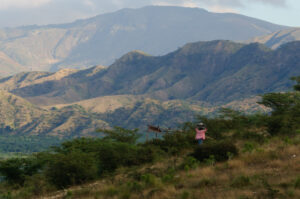
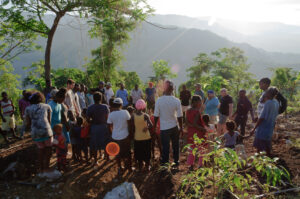
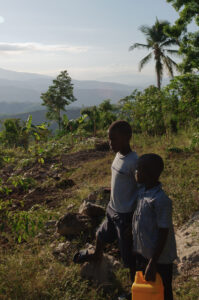
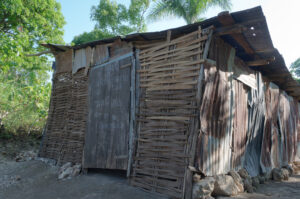
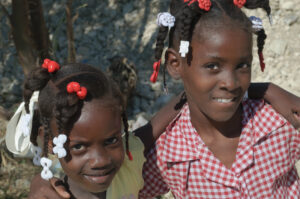
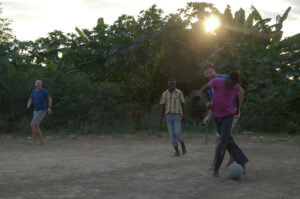
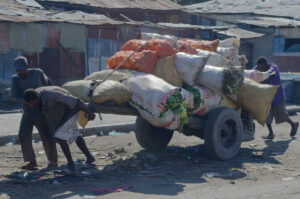
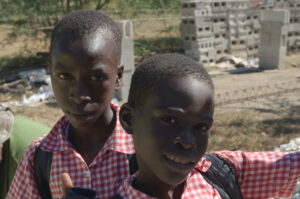
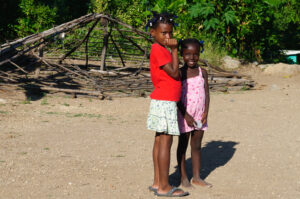
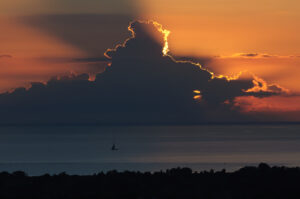
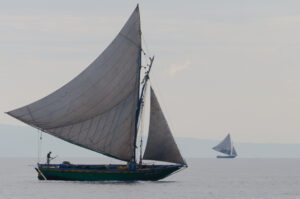
Thanks Tim for sharing that awesome adventure and your pictures with us! If you would like to have your trip featured on our blog and Facebook, send us your pictures and travel stories to info@travelhealthnw.com.
